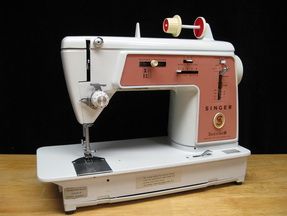
The Singer 626 offered a chainstitch option--perfect for basting.
At Threads, we regularly receive queries from readers about how to choose a sewing machine. Aspiring seamstresses want to know what features to look for, but we’ve found that everyone has different needs and preferences.
I asked the Threads staff about their experiences with their first sewing machines, posing the following questions:
Think back to your first sewing machine. What feature did you most appreciate? What feature did you wish the machine had? Was there a feature that you thought you’d love, and ended up not using much or even disliking?
With our combined 300-plus years of sewing (yes, it’s true!), we all had different stories to tell about our first machines. However, the recurring theme in all our answers was “simplicity and reliability.” None of us felt the call of dozens of fancy stitch patterns, and we all valued machines that felt user-friendly and trustworthy.
Read on for some verbatims, and to find out which features we longed for in our early days of sewing-and in some cases still long for! Although the machines we praise are no longer being manufactured, the qualities that we love(d) about them can be found in many new machines.
 Get more sewing machine-related articles:
Get more sewing machine-related articles:
• 17 Ways of Getting the Most Out of Your Sewing Machine
• Your Sewing Machine Buying Advice
• Sewing Machine Needles
• Video: How a Stitch is Made
• Understanding Thread Tension
Buttonhole-stitch envy
“The feature I always wished the machine had was an easy buttonhole maker. Making buttonholes required using the zigzag stitch on my mom’s machine, or hooking up a clunky and finicky attachment on Grandma’s machine. Both were Singer machines. I have inherited an old Singer Slant-o-matic like Mom’s, which does not have a buttonhole maker, either. I use the zigzag stitch. I should be an expert by now!
“The feature I like on this old Slant-o-Matic is the collection of “fashion disks,” which allow the machine to make different types of stitches. I know, I am living in the Dark Ages. Today’s computerized machines have millions of stitches and lots of other bells and whistles. But I’ll take my old reliable over them any day.”
Chainstitch and bobbin-winding
“I bought my first machine in about 1965 or 1966. It was a Singer Touch and Sew, and I think it was model 626. It had seven specialty push-button stitches including standard zig-zag. (Push button was the new thing at the time. Up until then you had to use cams for specialty stitches.) It also stitched a fabulous chain stitch that was easy to set up. The chain stitch was fantastic for any time stitches would ultimately be removed, for example when basting a muslin together.
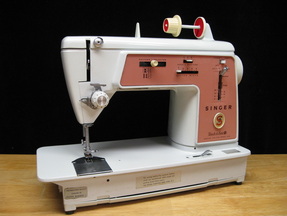
“The thing I loved most about that machine and wish I had today was that you wound the bobbin within the bobbin case. When the bobbin ran out, you left it right where it was, and left the needle threaded. You just pushed a button and hit the foot pedal and the bobbin was wound. You pushed the button again and returned to your sewing.

“What I like best about my new machine that I wish that machine had is the automatic thread cutter. As far as I’m concerned, that’s the best new invention out there!”
Easy portability
“I learned to sew on my mother’s early-1960s Singer machine (the “Rocketeer“), which was a big, solid, flat-bed machine. As a teen, I never bothered to read the manual or figure out most of its features-it always felt like a bit of a monster.
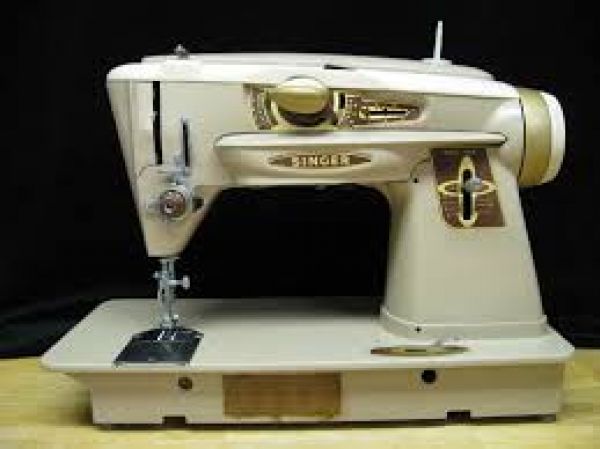
“When I bought my own first machine, many years later, I purchased a very basic mechanical machine, the Brother Pacesetter 1000. It offers about 13 stitches, including a four-step buttonhole. I’m not sure there’s a machine as bare-bones as this one nowadays. However, I loved it then, and I still love it now. It’s not too big or heavy, so it’s easy to carry when I go to a sewing class, or pitch in at the dance studio doing last-minute costume alterations. The stitch quality is excellent, and the stitch-width adjustment dial makes it easy to place the needle in just about any position, so top- and edgestitching evenly is simple. The only features I missed were a one-step, auto-size buttonhole stitch, and a needle-up/needle-down feature, so the machine would always stop with the needle down.
“Recently, I lost my newer, fancier machine in a serious flood. The PS 1000 has once again become my go-to sewing machine. It continues to behave well-but now that I’m older, I wish for an automatic needle-threader!”

Photo: Brother-USA.com
Strong, yet sensitive
“My first sewing machine-a Janome Memory Craft 3000, which is still the machine I use-purchased about 17 years ago, 100 percent fulfilled my expectations and needs at the time. I was sewing mostly Renaissance-faire costumes from mid- and heavy-weight upholstery brocades. The sales agent assured me and my mother (who purchased it for me to defend her old Singer from my handwheel-reversing propensities and super-thick sewing projects) that the machine would easily stitch through at least six layers of heavy denim without complaining. And he proved it with a demonstration. When seams can be three of four layers thick, and intersections are like road speed-bumps, you need that kind of capability.
“And now that sewing silk is my favorite thing to do, I’m pleased that the machine also handles extremely lightweight fabrics beautifully. If you’re considering a new sewing machine, or a first sewing machine, be strategic. Think about the kind of sewing you’re most likely to do and look for features that will make it easier. Think about the problems or limitations of your current machine and look for features that will solve them. Bells and whistles are nice, but solid basic functions are imperative. My old Janome has dozens of decorative stitches that I hardly ever use, and an automatic/sensor buttonholer that sees even less use (pull-over tops and zipped dresses are my staples); although I like having those capabilities just in case, and I know that buttonhole feature works incredibly well.”
 Photo: TheFabricPatch.com
Photo: TheFabricPatch.com
Classic reliability
“My first machine (a Singer Featherweight)came when I was nine. It had a straight stitch only and could sew reverse. It wound bobbins and had a nice little package of specialty presser feet and a wonderful sewing book that I memorized. I used everything this machine had to offer: the seam gauge, stitch length adjustment, the presser foot presser adapter, and the light. It didn’t do much but it did everything I needed and I sewed on it for decades. As I look back, I think having a limited machine like this made me a better sewer. I couldn’t depend on fancy stitches or sewing machine features to do the work for me. As a result, I have a good grasp of sewing. I also knew my machine very well and it was never in the shop….not once. It ran like a top.”
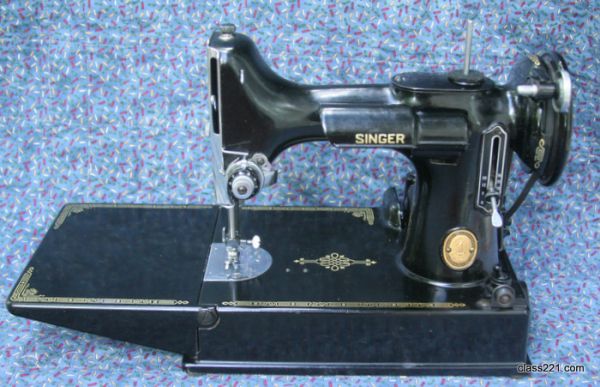
Simplicity and ease of use
“I’ve only ever had one machine and it’s very basic (a Bernina 1010). However, I actually appreciate its simplicity and the fact that it is so easy to use. My favorite feature is the thread cutter, since I pretty much always forget my scissors at the ironing board when I return to my machine. As for the features I wish I had, I would say a self threader, a one-step buttonhole option, and a variety of specialty stitches, since I enjoy crazy quilting.”

Controlled sewing
“My first sewing machine was a green metal Singer, and I remember the machine was SO heavy. Even as a teenager, I found it very difficult to carry. It had a lock-on cover with a handle, and almost every time I used it, I would bruise my shins carrying it to and from the closet.
“The machine had a few problems that, in ignorance, I thought were standard. The hand wheel was jammed, so I could not release the needle when I wound bobbins. I would always remove the needle to wind a bobbin, for fear of breaking the needle at high speed. The foot pedal just buzzed loudly when pressed. It would never start stitching until I manually gave the hand wheel a turn, and then it would take off, vroom. For years, to achieve any precise seams and to edgestitch, I would manually turn the hand wheel, stitch by stitch.
“Today, I’m lucky to have several sewing machines. The features I value the most probably relate to my early sewing experiences, and they are simple concepts found on most models. I love speed control. You can control the speed by foot pressure, but being able to set it on the machine as well has saved me from many mishaps. The needle-down feature is also on my list of favorite features. I value being able to control the placement of the needle, without constantly reaching for the hand wheel.
“There are two features of modern machines that I thought I would be crazy about, but have realized I could take or leave. Auto-thread snipping keeps your work area clear of thread bits, but most auto-snipping machines leave an inch or two of thread that you have to go back and snip anyway. The next contemporary feature I don’t seek out is a lightweight model. I thought I would be enthralled by an easy-to-carry machine, but now that I have a designated sewing space – and a rolling cart for travel – I better appreciate the solidity of a metal sewing machine.”
What do you value in a sewing machine? What features would you recommend to a new sewer?


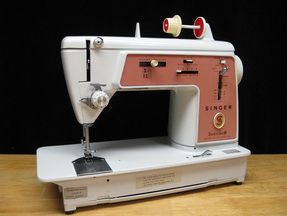







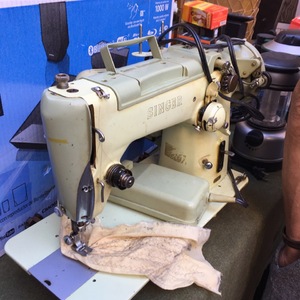
































I have been a "hard-core-sewer" for a long time. I have sewn on basic machines and now I have the new ones. I think a lot of people are thrown by "a gazillion stitches." You get a better machine and they are on there but that isn't the main thing. And, admittedly, I don't care very often about the decorative stitches but I do s-ooo love a lot of the modern things on the new, better machines. Among my favorites are:
1. Much, much better lighting (and that is a deal-breaker!)
2. Automatic needle threading (Amazing!)
3. Low bobbin indicator (I always wished for that!)
4. Incredibly easy, one-step buttonholes and choices among
several types for different applications
5. Really nice seam finishes that really rival a serger.
I have a side-cutter attachment to use with it.
'Makes your garment look professional and that is
everything.
6. A really long, easy to use basting stitch
(certainly preferable to the old chain stitch)
7. A hand-picked stitch (mimics a hand-stitch, great for
decorative topstitch!)
I could definitely go on but the features that I listed are very basic. I really don't have any interest in going without them. I have always been very sentimental about all my machines but I am over them. Give me the modern machines any day of the week to one of my old ones!
up until a couple of months ago, my regular machine was a 1955 Elna Supermatic. I finally succumbed and bought a Babylock Quest because I love the brand, I have the Evolution, and it was a great deal. My complaint with the Quest is that the capacity of the bobbins seems small. There is, however, a great way to rewind them.
SoCindySew, I, too, really like a machine with good lighting. It doesn't seem all that long ago when I thought needle-threaders and task lighting were for "old ladies." Well, I was wrong! I am not an old lady, but I definitely appreciate features that make it easier to see what I'm doing, and my sewing results are visibly better.
Chelosunny, congratulations on the machine upgrade, but also on getting so many years of use from your Elna!
I have run a sewing based business for 38 years and for 36 of then have used Bernina 830s. I got 4 of them mainly because they did every task I needed and especially because they had a knee lift feature. I was used to industrial machines, but wanted something more versatile, but didn't want to give up the knee lift. At the time Bernina was the only company that had them. I have run these machines for 36 years, 8 hours a day. They are well worth the money if you can find a used one in good condition.
Victoria
Victoria's Bridal
http://www.victoriasbridalofseattle.com
My first machine was a basic low-end Singer that I purchased as a beginning sewer in college, and it had problems! Could NOT stitch through intersecting seams, especially denim, and had terrible tension issues. After struggling for a few years I shopped for a better machine. The Pfaff 1471 was my new dream machine (about 1987). Favorite features that would be great for any beginning sewer: needle up-or-down; multiple needle positions; tie-on/off; built-in needle threader; power to penetrate multiple layers of DENIM!; optional slow speed setting; integrated dual feed (vs the clunky dual feed attachment for my old Singer!), low bobbin alert. The ornamental stitches were appealing, but the sewing features turned out to be most valuable. One feature I thought would be a favorite was the free-arm, but I seldom use it—on occasion it is useful for mending a ready-made garment. I still use my Pfaff 1471 but love many of the newer features, such as built-in snips, auto tension/pressure adjustments, bright lighting, and faster stitching speed on my Pfaff Creative Sensation Pro. The extra-large harp space is also helpful. For crazy quilting, the ornamental stitches are fabulous!
I have a top of the line computerized Bernina now. Love the power, accuracy, speed, and variety of stitches that I could never attain with my older machines. However, I recently lost several of the computer boards for this computerized machine. It was down and out for 9 weeks, and it cost $850.00 for repairs. The old boards are returned to Bernina and refurbished boards are then eventually shipped for restoration of the machine. Once a new model comes out, the "old" machine boards are no longer manufactured, and then Bernina must refurbish these returned boards to avoid junking out a great piece of equipment. Babylock was the only company that I could find that had a completely mechanical machine with no computer boards and no circuit boards. This machine is OK to use. My age is showing, but I don't completely endorse our dependence on computers. My "new" machine is now 15 years old & that is ancient for a computer.
Several people have mentioned the importance of good lighting for sewing; I agree. Along with good lighting a good view of the sewing area is important. If possible test the sewing machine before buying it: different machines have different shape foot pedals and it can make a difference when sewing. I prefer the low, wide pedals to the taller, narrower kind. As sewinglamb mentioned, the size of the harp space really matters. It can be difficult to sew around a large garment when the space between the needle and the motor is too tight. I like the free arm feature; my first machine did not have that and I learned to put the cuff up by the needle instead, which was annoying. Does the machine start smoothly (I have used some that stalled and lurched) Good buttonholes are important (my Singer, from 1968, has an attachment that works well) One feature not yet mentioned is an overedging stitch and foot. I use that combination almost as much as straight stitch. Being able to reverse at the end of the seam is very helpful. Can the user change feet or needles conveniently? A good dealership can make a huge difference when the machine needs service. My most recent purchase was an embroidery type sewing machine. I didn't think I needed the embroidery feature, but the lights, view of the sewing area, foot control, ease of changing stitches, thread tension and balance control made it worth the price.
I took sewing and millenary in high school where they do their best to destroy any enjoyment you might get out of sewing, so I came to it late when I wanted to make costumes.
My first machine was a tiny Babylock Companion,which was a toy-sized freebie that came with the first Babylock sergers. I wish I still had it. It didn't do much, but for a toylike machine it did everything very, very well. Even now I'd keep it as my buttonhole maker because not even the highest-end machines make buttonholes better.
These days I'm a Brother girl. I have two different models of the Pacesetter. I bought my first Pacesetter, an early electronic, with a tax refund check in 2000. It was a revelation how smooth, strong, and wonderful sewing could be. But even though they did lots of new stuff the one thing I really, really love is the needle threader! I've always hated threading sewing machine needles. If you have to change colors frequently it's a real bother.
That machine passed away last year and I've upgraded to another pacesetter with some embroidery abilities. It's all very nice, but I actually turned down several excellent machines because I missed my needle threader. Best of all they've improved it so it doesn't break so easily!
I like my modern machines!
I grew up using my mom's old Singer treadle machine, straight stitch only even though she had a top of the range electric one which I eventually graduated to using. I think it was a 411G which came with the different cams for different fancy stitches. I used it throughout the sixties and seventies and when I married and moved out she let me take it with me. A true work horse. I then traded it in for another singer computerised version which had a tailor tack stitch which I took full advantage of. I have since upgraded several times but kept that machine as I still use the tailor tack stitch whenever I have to mark centre front line etc. No other machine has this stitch. I have an old Bernina 930 which does have a tailor tack stitch but it makes a continuous line of loops rather like a fringing stitch whereas as the Singer makes three loops on top of one another and moves on without stitching then stitches three more loops and so on. I have several machines now as I just can't bear to pass them on when I trade up and each one has a feature that the next one doesn't. I recently purchased a Janome Gem 760P a lightweight machine to take to classes and I am really impressed as even though it is a lightweight machine it sews through denim and really thick stuff and then straight to fine sheer fabrics with no problems. This one will definitely be kept and added to the collection!!!!
I couldn't believe your picture when I saw it. I just sold my Singer 626 in the cabinet for $75 with original manual and lots of extra feet. What a deal that lady got. My mother bought me that machine in 1969 - and it has sewn suede and leather purses, denim, chiffon and everything else under the sun with never a problem. I agree with the bobbin winder being great. I have a Pfaff 2134 and winding a bobbin is a pain. I also loved the button foot on my Singer - way better than my new machine.
After MANY years & hours of sewing, everything from wedding dresses to boat covers, I find I value some very basic things: a lovely straight stitch, tension easy to set, ability to sew many kinds of fabric, a great buttonhole, good lighting.
And some "bells & whistles": needle up-down, automatic thread cutter, many needle positions, adjustable speed, finger-tip run button in addition to control foot, hands-free control of the presser foot.
Things I really can't get excited about include: multitudes of stitches (though I use many of them occasionally), very light weight machines (they jump all over when I sew fast), bobbin winding without unthreading, machine embroidery (owned a Brother 6500 for years,probably embroidered less than 100 hrs)
After wearing out or nearly wearing out a number of mid-priced machines, I recently bought a Pfaff Performance 4.0 after researching & test-driving at least a dozen non-embroidery dozen mid-to-high end machines. It's a heavy beast, but quiet - I can sew in our winter home while my husband watches TV!
In addition, for ultra-portability I own a 1951 Singer Featherweight, and for leather, canvas & other very heavy sewing a 1951 Singer 201. For my daughters, I chose vintage Singers as well. These babies are very basic, but have perfect straight stitches, run forever, and are fun to use. I keep them tuned up & purring without a trip to the sewing machine doctor, and with all the on-line resources, can even repair or overhaul them.
I love, love, love . . . . the bobbin winding technique in my old Singer Touch and Sew. I can't understand for the life of me, why singer would discontinue that most helpful feature??? Does anyone know? I hope in thenear future singer will come back with the easy bobbin winding feature like the Touch and Sew has. Mine still works like a dream.
Just a tip for those that miss the thread cutter. Take the "blade/cutter" off of a dental floss container- some have just flat pieces- and glue it where you want it on your machine. Voila! Thread cutter!
My daughter wants a sewing machine for her next birthday next month. She has recently been trying it out, and from what I can tell she is actually pretty good at it. Just like you mention in your article I'll be sure to get her one that is easy to transport from place to place. That way she can take it in her room, or set it up in the kitchen if she wants to. Thanks for the great ideas. http://www.creativesewingcentersmn.com
I've owned or borrowed a variety of machines over the years, and I need one with a motor that will accelerate when I want to sew faster, will deal with heavy or light fabrics, and will hold a tune up for a season of hard work. I used to have an Elna that did this (until I couldn't get repairs), now I have a lower end Bernina. I could not give a fig for the decorative stitches, a self threading needle limits needle sizes, and every auto buttonholer has eventually stopped being automatic.
I need a straight, a zig zag, and a blind hem stitch. And honestly, I would like a chain stitch again. But the rest, naaaah.
I have two old Elnas. The first one, from 1967, was a fairly basic machine with straight, zigzag, hemstitch and serpentine stitches. I liked it and it worked well for many years but is currently hors de combat. Quite a few years later, I bought a used Supermatic, probably about 1970, which I am using now. I have a collection of disks for the fancy stitches but, like others here, I rarely use them. I don't have a buttonhole maker or guide but I get along just fine without one and I also have no trouble threading the needle, despite my age. The one thing that computerized machines have that I would love is the needle down/needle up control. Other than that, I can't think what else I might like.